Schneider Shorts of 16 June 2023 – an evaluation in Strasbourg finds a flyer, trash science from Rome, trash science from Harvard, cures for Long COVID and old age, with a baroque art sale, Latvian cooking recipes, informative Frontiers retractions, and finally, the mystery of who blew up the dam.
Table of Discontent
Russia’s War on Ukraine
- Who blew up the dam? – whom to believe, facts or journalistic balance?
Science Elites
- A complete policy for ethic and scientific integrity – how IBMP Strasbourg got evaluated
- Probably there was confusion – Susanna Scarpa can’t reach her rogue PhD student
- Fake it ’til you make it – Cheshire find fake Alzheimer’s science from Harvard and Mayo
Scholarly Publishing
- We will not pursue it further – FASEB loves their fraudsters
- Pollutant peril – Elisabeth Bik followed up a retraction at Frontiers
Science Breakthroughs
- Get young with taurine – Science has Spoken!
- Metformin beats COVID – but which trial to believe?
News in Tweets
Russia’s War on Ukraine
Who blew up the dam?
As you all know, russia is waging a genocidal colonial war on Ukraine, with the explicit goal to annihilate the entire country, its culture and its language, and to enslave its population as foot soldiers for russia’s future imperial wars. The list of russian war atrocities is endless, and now russia added another one, one of ecocide: the destruction of the Nova Kakhovka hydroelectric dam on 6 June 2023.
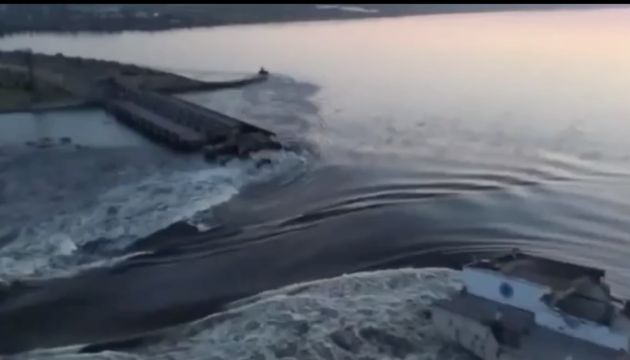
But wait, the non-Ukrainian media seems unsure who is to blame. Even Science, pardon Nature, has spoken: the dam collapsed all by itself, certainly it wasn’t the russians because it damaged them also:
“The 66-year-old Kakhovka dam on the Dnieper River in south Ukraine collapsed on the morning of 6 June after a suspected explosion, triggering a catastrophic humanitarian and environmental crisis.
Spanning an area of more than 2,000 square kilometres, the dam’s reservoir is the country’s largest in terms of water volume. The dam has been controlled by Russian forces for more than a year.
The breach triggered extensive flooding, which peaked at a depth of 5.6 metres in Kherson on 8 June and has already displaced more than 20,000 people across dozens of settlements, including in Russian-held areas on the river’s lower-left bank.”
Dear Nature, the river is called Dnipro, not “Dniepr”. Ukraine is not russian anymore. The devastation from the blown-up dam to the Ukrainian people, infrastructure, agriculture and especially to the environment is already immense, and it will get much worse with time. What russia did was a horrible crime of massive ecocide, part of their policy of scorched earth. Yet the implied assumption in most of the international news, not just the formerly TASS-partnering Reuters, but also the German Tagesschau, British BBC, American Washington Post, NBC and CNN was that it may just as well have been Ukrainians who blew up the dam. The only non-Ukrainian public person who was first to openly blame russia for this crime of ecocide was Greta Thunberg. Most others pretended we just can’t know for sure. UN tweeted this as the deadly flood spread:
It is not the first time our media and politicians react like this. Each russian war crime, like shooting down of MH17 in 2014, or more recently the bombings of the birth clinic and drama theatre in Mariupol, of the train station in Kramatorsk, of the POW camp in Olenivka, or of the Nova Kakhovka dam now: each time both sides were treated as equally suspicious culprits. This way the russian propaganda keeps winning, even if the truth was eventually and very quietly accepted.
The US historian Timothy Snyder blogged about this bad journalism:
“1. Avoid the temptation to begin the story of this manmade humanitarian and ecological catastrophe by bothsidesing it. That’s not journalism. […]
5. If Russian propaganda for external consumption is cited, it can help to also cite Russian propaganda for internal consumption. It is interesting that Russian propagandists have been long arguing that Ukrainian dams should be blown, and that a Russian parliamentarian takes for granted that Russia blew the dam and rejoices in the death and destruction that followed. […]
7. Dams are physical objects. Whether or how they can be destroyed is a subject for people who know what they are talking about. Although this valuable NYT story exhibits the above flaws, it has the great merit of treating dams as physical rather than narrative objects. When this exercise is performed, it seems clear that the dam could only have been destroyed by an explosion from the inside.
8. Russia was in control of the relevant part of the dam when it exploded. This is an elemental part of the context. It comes before what anyone says. When a murder is investigated, detectives think about means. Russia had the means. Ukraine did not. “
But what does science say? Well, the Nova Kakhovka dam was built in the 1950ies by the Soviet Union in a way to withstand a direct hit with a nuclear weapon. Attacking it with missiles would cause only a minimal damage and a little loss of water. The dam however was built in a way that it could be blown up from the inside by experts with access to internal plans and documents (during WW2, USSR did blow up a dam on Dnipro to stop the Nazi troops, later the Nazis did the same). Russia had all that: access, plans and experts. Since early 2022. They mined the dam with explosives already in October 2022, as President Volodymyr Zelensky publicly warned. In vain.
Ukrainians could not physically blow up that dam with missiles even if they were as evil as the media suspects them to be. If we exclude black magic, or interference by gods or aliens, the only actor physically capable of blowing up that dam was the occupying russian forces. Those are facts of engineering science, you can chose to trust either them or the russian TV. Oh wait, on russian TV they celebrate the blowing up of the Kakhovka dam and call to destroy the Kyiv dam next, to flood the Ukrainian capital.
The only argument our experts have for blaming Ukraine goes: russia doesn’t really benefit from blowing up the dam, look, they lost water supply to Crimea. It is a non-argument by idiots. The entire war turned out to be not to russia’s benefit, so maybe putin and lavrov are right when insisting that russia never attacked Ukraine, and that it was Ukraine and the NATO who attacked russia first, and that russia is merely defending itself? Let’s give this version more journalistic coverage, because one must hear both sides!
Khuilo’s first anniversary – Thoughts on russia’s war on Ukraine
One year of russia’s genocidal war: Things we learned, are slowly learning and haven’t understood yet.
The Zaporizhzhia Nuclear Power Plant, which is also under russian control since early 2022, used to rely on the water from the Nova Kakhovka reservoir to cool its nuclear rods. That water access is now gone, but the plant seems to have enough backup water so far to cool its reactors in cold shut-down mode. But russia knows it will lose this war, and they watch closely how the international community reacts to their recent war crime of ecocide. The occupied Zaporizhzhia Nuclear Power Plant, the biggest in Europe with 6 reactors, is loaded with explosives also. If it were to be blown up, the world will have much bigger worries than following expert arguments of why maybe Ukrainians did it themselves to spite russia.
Science Elites
A complete policy for ethic and scientific integrity
In 2017, I reported about the evaluation of the CNRS’ Institut de Biologie Moléculaire des Plantes (IBMP) in Strasbourg, France. The inspection by the Haut Conseil de l’évaluation de la recherche et de l’enseignement supérieur (HCERES) took place in the wake of a huge research fraud scandal at IBMP, that of Olivier Voinnet.
The travelling circus of research integrity in Strasbourg
On March 8, an international scientific review board will be evaluating the research at the French CNRS Institut de Biologie Moléculaire des Plantes (IBMP) in Strasbourg. This is the place where the former star (and now misconduct-tainted pariah) of plant sciences Olivier Voinnet shot to fame, where his main lab operated since 2002 until he was…
At the time of the 2017 HCERES evaluation, Voinnet was already exiled to ETH Zürich in Switzerland, and his IBMP lab was led by his right-hand man Patrice Dunoyer. Who was sacked after the 2017 HCERES evaluation, the lab dissolved.
Updated: CNRS lab of Voinnet’s right hand Patrice Dunoyer dissolved by director’s decree
The lab of Olivier Voinnet’s right hand man at IBMP Strasbourg has been dissolved. The news about the end of Patrice Dunoyer’s scientific career appeared on my site long before the information became official.
The problem in 2017 was that both the external evaluators and the evaluated IBMP scientists have published falsified data, starting with the IBMP director Laurence Drouard. In fact, Strasbourg seems to be one huge fraud swamp, read here:
The Strasbourg Swamp
You know Voinnet, but now meet other great life scientists of Strasbourg: Drouard, Loeffler, Boutillier, Mr and Mrs Egly, and many others.
And now, HCERES managed to run another evaluation. Last I heard they had difficulties convincing potential external experts to join a travelling circus where their task would be to nod approvingly when meeting research fraudsters. Previously, I reported Drouard to CNRS ombudsman for suspected research misconduct in her papers and in the PhD thesis of a senior IBMP researcher she mentored, Thalia Salinas-Giegé. CNRS decided that all that PubPeer evidence was slanderous lies from an internet troll and a foreign enemy of France, and not only fully whitewashed Drouard, but even promoted her and gave her a fat pay-rise. It’s all in the Strasbourg article above. The whitewash took place on orders from CNRS President Antoine Petit himself, who then declared in a French magazine that there was no fraud at CNRS at all, just scientific disagreements.
These were the conditions under which the new HCERES evaluation of IBMP took place in 2022-2023. Its report has been made public in April 2023. These were the members:
Chairperson:
- Mr Pedro Puigdomenech Rosell, Emeritus Professor, Spain
- Experts:
- Ms Justine Bertrand-Michel, Inserm, Toulouse (supporting personnel)
- Mr Vincent Colot, CNRS, Paris
- Mr Martin Crespi, CNRS, Gif-sur-Yvette (representative of CoNRS)
- Ms Christine Foyer, University of Birmingham, United Kingdom
- Ms Kristina Kuehn Martin-Luther-Universitaet Halle-Wittenberg, Germany
- Mr Dominique Rolin, Université de Bordeaux (representative of CNU)
- Ms Lesley Torrance, Emeritus Professor, University of St Andrews, United
- Kingdom
- Mr Bruno Touraine, Université de Montpellier
It should be noted that Martin Crespi was already evaluating IBMP in 2017, his main qualifications being his own PubPeer record. For example:
Anna Campalans , Adam Kondorosi , Martin Crespi Enod40, a short open reading frame-containing mRNA, induces cytoplasmic localization of a nuclear RNA binding protein in Medicago truncatula The Plant Cell (2004) doi: 10.1105/tpc.019406

In March 2017, while evaluating IBMP, Crespi issued a Correction:
“Figure 1D, […] included an inappropriately duplicated band […] However, the interaction between MtRBP1 and the full-length enod40 was confirmed several times and was presented also in Figure 1B. In the corrected figure, below, panel D has been replaced with the results from a separate experiment, wherein all of the indicated samples were run on a single gel as shown. The correction does not affect the results or conclusions of the manuscript, and the figure legend is unaltered from the original.”
Crespi also issued other corrections.
Did Plant Cell learn from Voinnet Affair?
The Plant Cell is an elite journal, its authors and editors are some serious heavyweights whose labs cannot be associated with data manipulation.
Also the external evaluator Dominique Rolin had to correct a paper:
Anne Mortain-Bertrand , Linda Stammitti , Nadège Telef , Patrice Colardelle , Renaud Brouquisse , Dominique Rolin , Philippe Gallusci Effects of exogenous glucose on carotenoid accumulation in tomato leaves Physiologia Plantarum (2008) doi: 10.1111/j.1399-3054.2008.01130.x

Further quantitative analysis is based on those strips.”
The Corrigendum from March 2019 insisted:
“The inversion that occurred in the initial version of Fig. 4B has however no impact on the quantification results.”
The external evaluator Lesley Torrance however decided against correcting his papers:
Ahmad Al-Mrabeh, Angelika Ziegler, Graham Cowan, Lesley Torrance A fully recombinant ELISA using in vivo biotinylated antibody fragments for the detection of potato leafroll virus Journal of Virological Methods (2009) doi: 10.1016/j.jviromet.2009.03.025

Another interesting new member of the HCERES board is Vincent Colot, his main qualification was probably his history as former collaborator of Voinnet. For example:
Arturo Marí-Ordóñez , Antonin Marchais , Mathilde Etcheverry , Antoine Martin , Vincent Colot , Olivier Voinnet Reconstructing de novo silencing of an active plant retrotransposon Nature Genetics (2013) doi: 10.1038/ng.2703

Colot’s main scientific achievement was to avoid retractions of his papers with Voinnet, in the above case he succeeded in preventing even a correction. I wrote about it here:
Why Nature Genetics overlooks Voinnet cheatings
The Olivier Voinnet affair is now a distant past. Despite new evidence of manipulated data still popping up, journals drew a line. Especially the elite journal Nature Genetics, which may or may not have to do with their Editor-in-Chief Myles Axton having some strange data in his paper.
Crespi, Torrance, Rolin and Colot are perfect fits for a whitewashing expedition. But the choice of the chairman, Pedro Puigdomenech Rosell, is unexpected. He protested in May 2018 in Le Monde against the whitewashing investigation of CNRS’ former chief biologist Catherine Jessus (Google-translated):
“This investigation should have been carried out by people outside the institutions concerned,” says Pere Puigdomènech, member of the CNRS scientific committee and researcher at the CSIC (the Spanish equivalent of the CNRS).”
Jessus critics defiant, reactionary cock-up and Chicken of Dishonour Legion
As Le Monde brought into public light the Catherine Jessus affair with its whitewashed data manipulation and the growing academic protest, a counter-revolution put its foot in. A signature list in the worst Stalinist tradition was published, organised by the very elite of French academia (mostly members of Academie de Sciences), and signed by hundreds,…
So what did these external HCERES experts find at IBMP? Not much to criticise! Quote:
“The unit has suffered from the aftermath of a highly publicized case of scientific misconduct within a former team of exceptional international standing. This team was ultimately shut down.”
It was Voinnet and Dunoyer, both are gone, and everyone else is an angel of honesty. This is what else IBMP was commanded for:
“During the period 2015 – 2018, the IBMP staff was negatively impacted by a case of scientific misconduct and the previous Hcéres committee considered this aspect. The IBMP has taken several measures in relation to this case, including the closure of the incriminated team, and it has established robust managerial rules to avoid any future misconduct issue and to promote scientific integrity. The IBMP Management has set up a system for archiving on a dedicated storage place all the raw data of all research articles published by IBMP researchers.
This archiving is accompanied by detailed declarative forms, specifying the involvement of each author in carrying out the experiments, analyzing the results and assembling the figures. The unit has overcome this difficult period successfully. […]They developed a complete policy for ethic and scientific integrity. A big investment was done to protect scientific assets and computer systems (600 kEuros over the period), to provide VPN to all staff and to improve data storage solution (850TB).”
Basically, lots of money was invested into internet surveillance to plug the leak which used to pass on internal information to Leonid Schneider. They don’t even mention the embarrassing corrections IBMP had to issue, like here, Pascal Genschik and Véronique Ziegler-Graff:
Benoît Derrien , Nicolas Baumberger , Mikhail Schepetilnikov, Corrado Viotti , Julia De Cillia , Véronique Ziegler-Graff, Erika Isono , Karin Schumacher, Pascal Genschik Degradation of the antiviral component ARGONAUTE1 by the autophagy pathway Proceedings of the National Academy of Sciences (2012) doi: 10.1073/pnas.1209487109

A Correction from June 2019 admitted manipulations beyond Figure 4:
““Fig. 1E: This panel displays issues: (1) The AGO1 blot presented in Fig. 1E is the same as in Fig. 1F and the AGO1 image was inadvertently flipped during image assembly. […] “Fig. 4A: The control lane (Lane 1) was duplicated […] “The original results and conclusions are unaffected by these corrections. B.D. takes responsibility for the inappropriate figure assembly. Corresponding author P.G. takes responsibility for not reviewing the data sufficiently and apologizes for not detecting these errors before publication.”
Fake science like this was not in the HCERES report, because one couldn’tt hang it on Voinnet. But Drouard was personally commanded for the research integrity lessons she gives to new PhD students. Seriously.
“The unit proposes a great program of HSE and ethic of science training with different tools to find a large public. The lab offers a new and efficient system for saving and archiving raw data. […] A very sustained effort is also given to the principles of honesty, scientific integrity and responsibility through a flyer and a complete guide named “integrity and responsibility in research practices” established by the CNRS entices committee (COMETS). Twice a year, the director gives a course on ethics and integrity and team leaders discuss integrity during the lab meeting.”
Drouard gives talks to students and she made a flyer. This is what France invests millions of euros into: cats preaching veganism.
This fraudulent crap by IBMP’s group leader Christophe Ritzenthaler was flagged already in my 2017 article:
Pascale Schellenberger , Peggy Andret-Link , Corinne Schmitt-Keichinger , Marc Bergdoll, Aurélie Marmonier, Emmanuelle Vigne, Olivier Lemaire , Marc Fuchs , Gérard Demangeat, Christophe Ritzenthaler A stretch of 11 amino acids in the betaB-betaC loop of the coat protein of grapevine fanleaf virus is essential for transmission by the nematode Xiphinema index Journal of Virology (2010) doi: 10.1128/jvi.00757-10

Not even a correction. But a flyer was made.
The HCERES investigators were so impressed, they even made a highlight summary:
“3/ The scientific production of the unit complies with the principles of research
integrity, ethics and open science. Strengths and possibilities linked to the context
A big effort has been made to improve the integrity, ethic and open science.
Training course on ethic and integrity are proposed twice a year to all new IBMP members by IBMP directror, dedicated flyer (in French and English).
Data sharing has been reorganized with dedicated place to store raw data accompanied with detailed declarative forms specifying the involvement of each author in carrying out the experiments, analyzing the results and assembling the figures.
Weaknesses and risks linked to the context Awareness of scientific ethics among the teams must be maintained.
The policy to improve open science is not completely clear, it would be interesting to edit some guideline for IBMP staff to share published data for instance i.e. data repository.”
This is what Drouard and her IBMP colleague Philippe Giegé, who is about to succeed her as the new IBMP director, once published together:
Ludovic Delage , Philippe Giegé , Masahiro Sakamoto , Laurence Maréchal-Drouard Four paralogues of RPL12 are differentially associated to ribosome in plant mitochondria Biochimie (2007) doi: 10.1016/j.biochi.2007.02.002

You probably guessed that Philippe Giegé is the husband of Drouard’s disastrous mentee Thalia Salinas-Giegé.
They are all taking a piss. The HCERES evaluator Puigdomenech explained to me in an email:
“Our Committee evaluated the science carried out in IBMP not scientific integrity that was discussed, anyway, with scientist of the Institute.”
Well, the above gel by current and future IBMP directors Drouard and Giege is completely fraudulent. In his emails to me, Puigdomenech admitted to be confused about who Drouard was in the first place. He thought she was some member of Voinnet’s lab, long sacked.
Probably there was confusion
We leave France and go to Italy. Susanna Scarpa is professor of experimental medicine at the “La Sapienza” University of Rome in Italy, her papers are about curing cancer. Since recently she has a PubPeer record, thanks to Cheshire. After my email, Scarpa announced to reply there, which she now did. Mostly on the papers where she was not last author, pushing the responsibility away from herself.
Like here:
Massimo Tatti , Marialetizia Motta , Susanna Scarpa, Sabrina Di Bartolomeo , Valentina Cianfanelli , Marco Tartaglia , Rosa Salvioli BCM-95 and (2-hydroxypropyl)-β-cyclodextrin reverse autophagy dysfunction and deplete stored lipids in Sap C-deficient fibroblasts Human Molecular Genetics (2015) doi: 10.1093/hmg/ddv153



Scarpa explained on PubPeer:
“My contribution to this paper was exclusively the immunofluorescence for cathepsin B and cathepsin D. Therefore, I can only respond to your first answer regarding fig 2A and fig 3A. I agree with your comment that the two panels you indicated are the same. I’m really sorry about this mistake, probably there was confusion in the construction of the figure, due to the multitude of the acquired images. I cannot respond for the other two points you raised, because the experiments had been performed by other co-authors and I don’t have any data to their regard. Furthermore, the the first and the last authors Dr. Tatti and Dr. Salvioli have both been retired for many years.”
There are two more problematic papers by this team in same Human Molecular Genetics (Tatti et al 2012 and Vaccaro et al 2010), but the authors need not to worry. This Oxford University Press journal is run by an English cheater and an unhinged bully who rats out whistleblowers and always takes the side of research fraudsters.
Bologna cover-up at Oxford University Press
This is the second part of the Bologna whistleblower account. As the university was burying their own misconduct findings, Oxford University Press and their ignoble editor were busy punishing and gaslighting the whistleblower.
Scarpa also admitted a problem in this paper from her lab:
Ludovica Taglieri , Francesco Saccoliti , Alice Nicolai , Giovanna Peruzzi , Valentina Noemi Madia , Valeria Tudino , Antonella Messore , Roberto Di Santo , Marco Artico , Samanta Taurone , Maurizio Salvati , Roberta Costi , Susanna Scarpa Discovery of a pyrimidine compound endowed with antitumor activity Investigational New Drugs (2020) doi: 10.1007/s10637-019-00762-y

Scarpa replied on PubPeer:
“I agree with you that the 2 last bands of actin are duplicated. I send here the western blot for actin relative to the specific chosen experiment, probably the quality of this blot was not good and another control of actin with better quality had been chosen.“
Right…. And now? Nothing?
Scarpa did not reply on numerous other threads. She remained silent regarding this paper in the same journal:
Ludovica Taglieri , Giovanna Rubinacci , Anna Giuffrida , Simone Carradori , Susanna Scarpa The kinesin Eg5 inhibitor K858 induces apoptosis and reverses the malignant invasive phenotype in human glioblastoma cells Investigational New Drugs (2018) doi: 10.1007/s10637-017-0517-1



And this paper, also in same Springer Nature journal (its editorial board member is Anil K Sood!):
Francesca De Iuliis , Ludovica Taglieri , Gerardo Salerno , Anna Giuffrida , Bernardina Milana , Sabrina Giantulli , Simone Carradori , Ida Silvestri, Susanna Scarpa The kinesin Eg5 inhibitor K858 induces apoptosis but also survivin-related chemoresistance in breast cancer cells Investigational New Drugs (2016) doi: 10.1007/s10637-016-0345-8


The other paper using that same fake gel was also fraudulent:
Francesca De Iuliis , Gerardo Salerno , Anna Giuffrida , Bernardina Milana , Ludovica Taglieri , Giovanna Rubinacci , Sabrina Giantulli , Federica Terella , Ida Silvestri , Susanna Scarpa Breast cancer cells respond differently to docetaxel depending on their phenotype and on survivin upregulation Tumor Biology (2016) doi: 10.1007/s13277-015-4075-x


No answer here also. The first author Francesca De Iuliis now works as Medical Affairs Academy Scientific Director at Pfizer. As you saw, she has all the required skills to earn money with cancer. Another regular co-author is Ludovica Taglieri, who now works as Product Specialist at Astra Zeneca:
Ludovica Taglieri , Francesca De Iuliis , Anna Giuffrida , Sabrina Giantulli , Ida Silvestri , Susanna Scarpa Resistance to the mTOR inhibitor everolimus is reversed by the downregulation of survivin in breast cancer cells Oncology Letters (2017) doi: 10.3892/ol.2017.6597


Taglieri also certainly knows how to sell fake garbage. Not sure this is what Astra Zeneca wants her to do, but it’s their money and uhm, their patients’ lives.
Once, Scarpa openly blamed Taglieri:
Giulia Stazi , Ludovica Taglieri , Alice Nicolai , Annalisa Romanelli , Rossella Fioravanti , Stefania Morrone , Manuela Sabatino , Rino Ragno , Samanta Taurone , Marcella Nebbioso , Raffaella Carletti , Marco Artico , Sergio Valente , Susanna Scarpa, Antonello Mai Dissecting the role of novel EZH2 inhibitors in primary glioblastoma cell cultures: effects on proliferation, epithelial-mesenchymal transition, migration, and on the pro-inflammatory phenotype Clinical Epigenetics (2019) doi: 10.1186/s13148-019-0763-5




Scarpa wrote on PubPeer:
“I’m trying to respond to your request, but for me it is not easy, because the PhD student Dr. Ludovica Taglieri which has done all the experimental work has left from Rome and from University and she is no longer doing research. I don’t have contact with her and therefore I have problems in finding original data.”
Taglieri is easy to find: she is on LinkedIn. But then again, she didn’t answer to me there. Also De Iuliis didn’t.

Fake it ’til you make it
Cheshire also found this forgery:
Preeti Putcha , Karin M. Danzer , Lisa R. Kranich , Anisa Scott , Melanie Silinski , Sarah Mabbett , Carol D. Hicks , James M. Veal , Paul M. Steed , Bradley T. Hyman , Pamela J. McLean Brain-Permeable Small-Molecule Inhibitors of Hsp90 Prevent α-Synuclein Oligomer Formation and Rescue α-Synuclein-Induced Toxicity Journal of Pharmacology and Experimental Therapeutics (2010) doi: 10.1124/jpet.109.158436


Now, the authors are some serious bigwigs. The Schneider Rule of “How to Find Cheaters by Following One of Them” applies also here:
Pamela McLean is Professor of Neuroscience at the Mayo Clinic. She retracted a fraudulent paper with Gizem Dönmez and Leonard Guarente (Donmez et al 2012). She also published fraud with Frederic Checler, Research Director at IPMC in Valbonne, France, (over 30 fake papers on PubPeer) and his mentee Cristine Alves Da Costa (presently a tenured junior research director at the same IPMC). I wrote about these people in these two articles:
The original sins of Leonard Guarente
“Without specific and credible allegations of research misconduct, MIT is unable to take any action.”
The potential problems of Eliezer Masliah
“the confusion occurred while utilizing prior panels as example ” – emeritus professor Eliezer Masliah
Here is McLean’s paper with Checler and Alves Da Costa:
Emilie Giaime , Claire Sunyach , Magali Herrant , Sébastien Grosso , Patrick Auberger , Pamela J. McLean , Frédéric Checler , Cristine Alves Da Costa Caspase-3-derived C-terminal product of synphilin-1 displays antiapoptotic function via modulation of the p53-dependent cell death pathway Journal of Biological Chemistry (2006) doi: 10.1074/jbc.m508619200

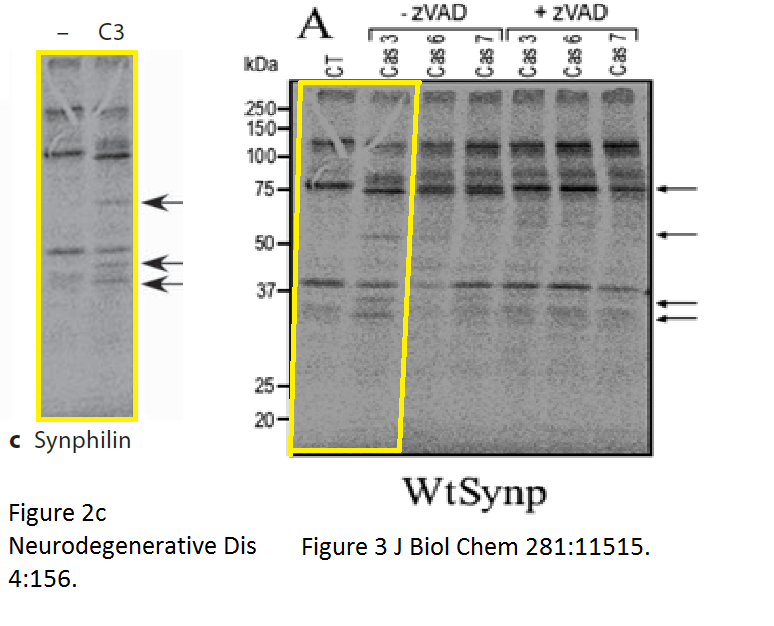
Bradley Hyman is Professor of Neurology at Harvard Medical School and Director of the Massachusetts Alzheimer Disease Research Center at the Massachusetts General Hospital. He coauthored a paper (Kara et al 2019) with the Swiss cheater, bullying diva and carrier of an imaginary PhD, Adriano Aguzzi.
Aguzzi and the Lowlifes
The prion researcher Adriano Aguzzi used to describe his Pubpeer critics as “lowlifes”, and himself as a victim of a lynch mob. But after Elisabeth Bik helped him find even more mistakes in his papers, Aguzzi changed his stance.
Sylvain Lesné is a failed scientist
From Lesné’s public shame to successful role models of neuroscience like Aguzzi and Tessier-Lavigne.
Worse, Hyman published this fraud with his colleagues Dora Kovacs at MassGeneral (PubPeer record here) and Rudolph Tanzi at Harvard (PubPeer record here, mentioned in the second article above):
Luigi Puglielli , Genevieve Konopka , Eunju Pack-Chung , Laura A. MacKenzie Ingano , Oksana Berezovska , Bradley T. Hyman , Ta Yuan Chang , Rudolph E. Tanzi , Dora M. Kovacs Acyl-coenzyme A: cholesterol acyltransferase modulates the generation of the amyloid beta-peptide Nature Cell Biology (2001) doi: 10.1038/ncb1001-905
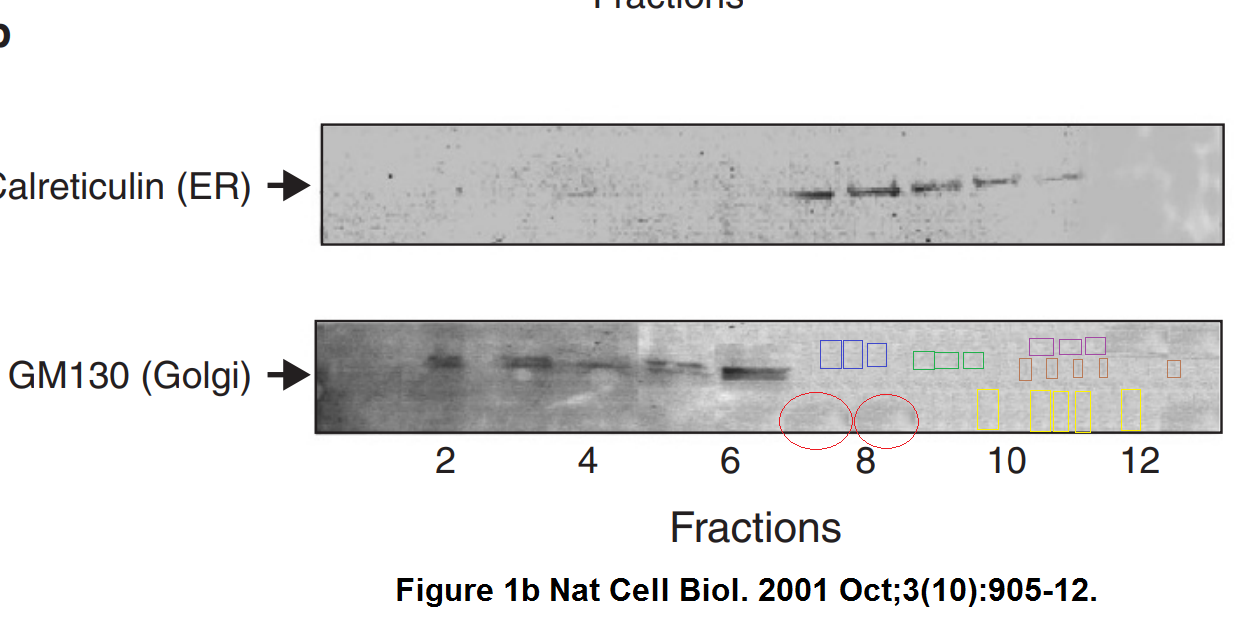
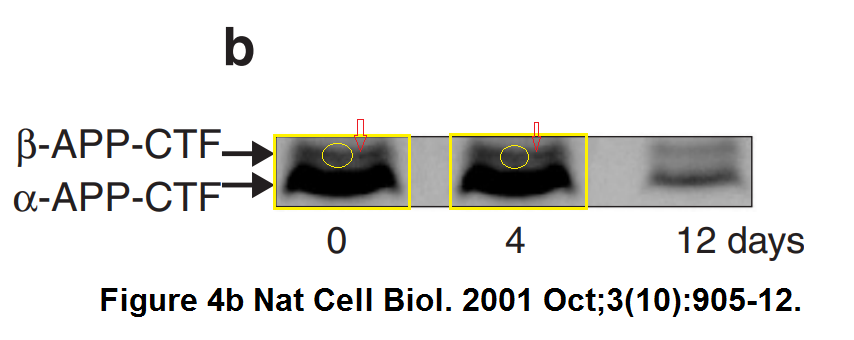
There’s also this by Hyman:
Alix De Calignon , Manuela Polydoro , Marc Suárez-Calvet , Christopher William , David H. Adamowicz , Kathy J. Kopeikina , Rose Pitstick , Naruhiko Sahara , Karen H. Ashe , George A. Carlson , Tara L. Spires-Jones , Bradley T. Hyman Propagation of tau pathology in a model of early Alzheimer’s disease Neuron (2012) doi: 10.1016/j.neuron.2011.11.033

Fake error bars again:

That’s why these people are at the very top, get the best jobs and grants, and publish in the best journals.
Scholarly Publishing
We will not pursue it further
We are all used to commercial publishers doing little to nothing about research fraud. But certainly learned societies and their journals are different? Dream on. Their leadership are the same academic fraudsters and their enablers.
This forgery from the same “La Sapienza” University of Rome you visited before was published in The FASEB Journal, issued by the Federation of American Societies for Experimental Biology (FASEB, “comprised of 26 scientific member societies, representing more than 110,000 researchers around the world“), and published by Wiley:
Laura Pelosi , Cristina Giacinti , Chiara Nardis , Giovanna Borsellino, Emanuele Rizzuto , Carmine Nicoletti , Francesca Wannenes , Luca Battistini , Nadia Rosenthal , Mario Molinaro , Antoniò Musar Local expression of IGF‐1 accelerates muscle regeneration by rapidly modulating inflammatory cytokines and chemokines The FASEB Journal (2007) doi: 10.1096/fj.06-7690com

There was also a spliced gel in Fig 3. Antoniò Musar explained on PubPeer in April 2023:
“The authors no longer have the original data, so cannot identify and potentially replace the indicated panels, which anyway are representative images. The representative images do not impact the conclusions of the paper, based also on the evidence that there were not statistically significant differences between the highlighted images. The authors apologise for any inconvenience caused.”
An Erratum was issued on 1 June 2023
“In response to a report of possible image duplication, the authors found that in Figure 1C, the image presented as wild-type cells at 5 days post-cardiotoxin (CDX) injection is in fact a different view of the image showing transgenic cells at 24 hours post-CDX injection. The authors acknowledge this error as a mistake in assembling the figure submitted for publication. This error does not affect the interpretation of the remaining data or the conclusions reported in the article. The authors apologize for any inconvenience this error may have caused.”

But Cheshire noticed:
“Unfortunately, this correction did not address the overlap in Figure 1A, nor the concern about probable differential splicing in Figure 3B.“
Cheshire also asked:
“The authors stated in #3 that they “no longer have the original data,” yet they were able to update Figure 1C with the high resolution images for the erratum (available on the journal website?) Could the authors explain this apparent inconsistency?“
FASEB’s Editorial & Production Manager named MR Carey however saw no inconsistencies anywhere, and sternly informed Cheshire:
“We conducted an independent analysis of the figures and presented the results to the authors, along with the concerns raised in PubPeer. The editors were satisfied with the authors’ responses, and we published an erratum, closing the matter.”
MR Carey then made another statement to put Cheshire in his place once and for good:
“We are aware that Figs. 1A and 3B were not corrected in the erratum. After analysis of the content of the manuscript, including the figures, as well as the author’s explanation, and following the COPE guidelines, the editors judged that correction of those figure panels was not required.
We do appreciate your vigilance, and we thank you again for bringing this to our attention. The editors consider this case to be closed, and we will not pursue it further.“
Covering up fraud is certainly not in the COPE guidelines.
The main difference between a crook and a dumb crook is that the latter doesn’t know which things are not for saying out loud, certainly not to the wrong people. That explains why FASEB’s Director of Publications Darla Henderson didn’t reply to me. I think they blacklisted me ages ago: an earlier case I brought to FASEB Journal received no reaction at all:
Bloch and the Greek Horrors
“Wrong again Do you have a problem?” – Bob Bloch
Even this utterly fraudulent trash by Mario Saad‘s gang, which I reported to FASEB already in 2016, remains safe. Saad had to retract many papers (18 retractions at least), but this one is untouched because FASEB’s version of COPE guidelines says so:
Cláudio T. De Souza , Eliana P. Araújo , Luiz F. Stoppiglia , José R. Pauli , Eduardo Ropelle , Silvana A. Rocco , Rodrigo M. Marin , Kleber G. Franchini , José B. Carvalheira , Mário J. Saad , Antonio C. Boschero , Everardo M. Carneiro , Lício A. Velloso Inhibition of UCP2 expression reverses diet-induced diabetes mellitus by effects on both insulin secretion and action The FASEB Journal (2007) doi: 10.1096/fj.06-7148com






Many journals retracted Saad’s fraud by now, but not FASEB J. Because their “editors judged“.
Would you like to know who sits of FASEB Journal‘s editorial board as Associate Editor? C. Ronald Kahn. And Charles Serhan (read about his scam here). What kind of ethics can you expect.
C Ronald Kahn and The Problem of Irreproducible Bioscience Research
“not everyone in the research community accepts that the problem requires such attention; some believe it is overblown.” -Jeffrey Flier, emeritus dean of Harvard Medical School
Pollutant peril
Elisabeth Bik followed up on a retraction in Frontiers, and published a blog post:
“This post describes a set of over 20 papers with mostly image problems from the Department of Pharmacology at the School of Medicine of Zhejiang University in Hangzhou, China. All papers have Professor Ximei Wu as the common – and often corresponding – author. The Wu lab does research on stem cell and bone development, and their papers contain many images of Western blots and immunohistochemistry experiments. […]
My search started when I noticed a recent retraction at Frontiers in Public Health. A paper, “Revamping of Chronic Respiratory Diseases in Low- and Middle-Income Countries“, was retracted because it showed high similarity to a 2021 paper published in The Lancet. The corresponding authors were Musaddique Hussain and Ximei Wu. […]
Not mentioned in the retraction notice, but a big conflict of interest was that two of the three reviewers of the now-retracted Frontiers paper were affiliated with the Government College University in Faisalabad, Pakistan. That is the same institution as the affiliation of one of the authors, Malik Saadullah. These two people should not have agreed to be reviewers of this manuscript and the journal editors should not have asked them in the first place.”

Nobody at Frontiers noticed during the “peer reveiw” the tortured phrases like ‘valid widespread wellbeing inclusion‘ or ‘pollutant peril‘. Bik sums up:
“As of today, I have found 18 papers from Professor Ximei Wu to have problems. Three additional papers had already been flagged on PubPeer by other users, bringing the total of PubPeer posts on papers by this author to 21.
That is quite an impressive amount, given that Wu authored 55 papers (as per PubMed) during his employment at Zheijiang University.
The papers span a period of over 10 years, from 2012 to 2023. Almost all papers, except for the now-retracted Frontiers in Public Health paper were funded by the National Natural Science Foundation of China, one of the main funders of scientific research in China.”

There is also a list:
Science Breakthroughs
Get young with taurine
Last week, the science and health news worldwide exploded. A simple anti-aging supplement was discovered, and it’s taurine, a popular ingredient of energy drinks.
In fact, Science (the journal) has Spoken:
Parminder Singh , Kishore Gollapalli , Stefano Mangiola , Daniela Schranner , Mohd Aslam Yusuf , Manish Chamoli , Sting L. Shi , Bruno Lopes Bastos , Tripti Nair , Annett Riermeier , Elena M. Vayndorf , Judy Z. Wu , Aishwarya Nilakhe , Christina Q. Nguyen , Michael Muir , Michael G. Kiflezghi , Anna Foulger , Alex Junker , Jack Devine , Kunal Sharan , Shankar J. Chinta, Swati Rajput, Anand Rane, Philipp Baumert, Martin Schönfelder, Francescopaolo Iavarone, Giorgia Di Lorenzo, Swati Kumari, Alka Gupta, Rajesh Sarkar, Costerwell Khyriem, Amanpreet S. Chawla, Ankur Sharma, Nazan Sarper, Naibedya Chattopadhyay, Bichitra K. Biswal, Carmine Settembre, Perumal Nagarajan, Kimara L. Targoff, Martin Picard, Sarika Gupta, Vidya Velagapudi, Anthony T. Papenfuss, Alaattin Kaya, Miguel Godinho Ferreira, Brian K. Kennedy, Julie K. Andersen, Gordon J. Lithgow, Abdullah Mahmood Ali, Arnab Mukhopadhyay, Aarno Palotie, Gabi Kastenmüller, Matt Kaeberlein, Henning Wackerhage, Bhupinder Pal, Vijay K. Yadav Taurine deficiency as a driver of aging Science (2023) doi: 10.1126/science.abn9257
From the abstract:
“Taurine abundance decreases during aging. A reversal of this decline through taurine supplementation increases health span and life span in mice and worms and health span in monkeys. This identifies taurine deficiency as a driver of aging in these species.”
All big news outlets worldwide jumped on it, countless science and health journalists joined Science‘s Editor-in-Chief Holden Thorp in gulping down extra cans of Red Bull and Monster Energy in order to live longer. Many illustrated their stories with pictures of meat, because that’s where taurine is abundant in. Eat meat, live longer? Here science groupie Ian Sample of The Guardian:
“It is unclear whether humans might benefit in the same way – or whether the required high doses are even safe – but scientists believe the evidence is strong enough to warrant a large-scale trial, particularly given that taurine occurs naturally in the body and is already used as a supplement at lower doses.
“Taurine abundance declines with age and reversal of this decline makes animals live longer and healthier lives,” said Dr Vijay Yadav, who led the research at Columbia University in New York. “At the end of the day, these findings should be relevant to humans.”
Prof Henning Wackerhage, a molecular exercise physiologist on the team at the Technical University of Munich, said a trial would compare how humans fared after taking daily taurine or placebo supplements. “It will probably be very difficult to look at whether they live longer, but at least we can check if they live healthier for longer, and that of course is the goal for medicine.””
We have Dr Vijay Yadav of Columbia University, we have the Germans, and we also have the University of Washington professor Matt Kaeberlein who peddles rapamycin as anti-aging cure via his businesses like Optispan Ventures to dogs and their rich owners. He declares to have no conflict of interests whatsoever, even if the Science paper used rapamycin: “Compared with control mice, rapamycin-treated taurine-deficient mice showed improved muscle-, anxiety-, and memory-related parameters“. Kaeberlein also pushes NAD+ supplements, spermidine, urolithin A and other things for anti-aging. Now also taurine.
Thing about taurine is that it has virtually no side effects simply because our bodies are already full of it (just as with spermidine, incidentally). Even vegans have no taurine deficiency, because humans synthesise this amino-sulfonic acid physiologically. Unlike cats, so maybe there’s an anti-aging market there, Dr Kaeberlein?
Yes, old people lack taurine. But they also lack a lot of other things, including hair pigment, all biomarkers of being old. But then again, Peer-Reviewed Science has just shown that feeding taurine to mice and monkeys leads to their rejuvenation, right? Peer-Reviewed Science also shows daily how mice are cured of cancer, because it’s that easy to fudge preclinical research.
When taurine clinical trials will predictably fail, scientific community will say the usual: that the Bible is right and humans are biologically different from all other animals.
Metformin beats COVID
Elsewhere, the popular anti-aging drug metformin was established as a therapy for Long COVID. New Scientist reports:
“With preventative drugs and other treatment options being limited, Carolyn Bramante at the University of Minnesota and her colleagues tested the potential of several therapies, including metformin, which is commonly used to control blood sugar levels in people with type 2 diabetes and has been shown to limit the replication of the SARS-CoV-2 coronavirus in the lab.
The team looked at 1126 people, aged 30 to 85, who had tested positive for SARS-CoV-2 within the past three days. They were all overweight or obese, which can raise the risk of severe covid-19, but they didn’t require hospital care for the infection.
The participants were randomised to receive a range of potential treatments, including combinations of metformin, the anti-parasitic drug ivermectin, the antidepressant fluvoxamine or a placebo. At a 10-month follow-up, 6.3 per cent of those who took metformin had been diagnosed with long covid, compared with 10.4 per cent on placebo, suggesting that the drug prevented 41 per cent of long covid cases in the trial. Neither ivermectin nor fluvoxamine reduced the risk.”
Meh, The Scientist references some Indian paper about metoformin killing SARS-CoV2 and not Henry Markram!
Henry Markram crushes COVID-19 with metformin and Atkins diet
Henry Markram deployed his Blue Brain supercomputer to crack COVID-19, thanks to Open Access and Frontiers. He now announces to use the technology to “address so many other diseases, accelerate science, and help save the planet from climate change”
Anyway, here is the paper:
Carolyn T Bramante , John B Buse , David M Liebovitz , Jacinda M Nicklas , Michael A Puskarich , Ken Cohen , Hrishikesh K Belani , Blake J Anderson , Jared D Huling , Christopher J Tignanelli , Jennifer L Thompson , Matthew Pullen , Esteban Lemus Wirtz , Lianne K Siegel , Jennifer L Proper , David J Odde , Nichole R Klatt , Nancy E Sherwood , Sarah M Lindberg , Amy B Karger , Kenneth B Beckman, Spencer M Erickson, Sarah L Fenno, Katrina M Hartman, Michael R Rose, Tanvi Mehta, Barkha Patel, Gwendolyn Griffiths, Neeta S Bhat, Thomas A Murray, David R Boulware Outpatient treatment of COVID-19 and incidence of post-COVID-19 condition over 10 months (COVID-OUT): a multicentre, randomised, quadruple-blind, parallel-group, phase 3 trial The Lancet Infectious Diseases (2023) doi: 10.1016/s1473-3099(23)00299-2
This same David Boulware previously celebrated fluvoxamine as a cure for COVID-19. Which, as he and his colleagues now suddenly insist (likely nudged by FDA), doesn’t work at all. But metformin does?
Die with a smile: antidepressants against COVID-19
“Fluvoxamine could certainly be something you wanna put in the tool chest. ‘Cause it looks as if it has the promise to reduce the likelihood of severe illness.” – Francis Collins, NIH Director.
By the way, a different group of clinical investigators, the one that postulated fluvoxamine as the cure for COVID-19 (Reis et al 2021), later on determined that “metformin did not provide any clinical benefit to ambulatory patients with COVID-19 compared to placebo” (Reis et al 2022).
Who is right then? The one with the bigger impact factor? Neither group?
News in Tweets
- Carlo Croce has been forced by court to sell his collection of baroque art paintings to pay his lawyers: “The Sheriff of Franklin County has requested that Plaintiff include the in the Alias for instructions to the Sheriff to forcibly enter the property for the purpose of seizing, levying, tagging, seizing, inventorying, appraising and auctioning certain property“. Smut Clyde however is convinced that Croce’s art collection is just as fake as his science. The big Italian data forger most likely fell for art forgers. We will soon know for sure, when the art enters the auctions.
- Frontiers retracts Mills et al 2022: “Following publication, the publisher uncovered evidence that several false identities were listed as authors for this article. During this investigation, the publisher was unable to confirm the institutions of the authors Hilla Mills, Ronald Glassen, Susanne Klenk, Nova Tang, or Luke Cheung. This investigation was conducted in accordance with Frontiers’ policies and the Committee on Publication Ethics (COPE) guidelines. The investigation also uncovered concerns about the presentation and validity of the data in the article.” The publisher single-handedly uncovered this case of fictional (and mostly white) authors by reading For Better Science (article below).
The incredible collaborations of Renaissance men and women
Nick Wise and Alexander Magazinov on the authorships-for-sale market on social media. Merely $700 for the 7th position on some paper way outside your expertise!
- In November 2020, Latvian scientists published a 430 page document titled “Economic, political and legal framework of Latvian economy for preserving the potential and promoting the growth of competitiveness after crises caused by the pandemic (reCOVery-LV)“. It was written by the University of Latvia in cooperation with the Latvian University of Agriculture, Riga Technical University, Riga Stradins University and the Latvian Academy of Sciences, funded with € 495,000. After the list of references and starting with the page 404 (sic!), the reader is treated to diagrams of cooking recipes for “millet-carrot pancakes”, “beetroot salad with canned peas”, “mashed potatoes with meat sauce”, “white bean soup”, “pasta bake with vegetables”, “omelette”, “vegetable risotto with canned fish”, “cucumber and bell pepper salad”, “oatmeal cookies”, “pilaf”, “macaroni with pork”, “bean and cabbage salad”, “backed apples” and “rice pudding”, among other things.
- To become an Editor-in-Chief at ACS, you need to prove yourself as an unscrupulous git who will foster research fraud and put money over everything. Congrats to the current Executive Editor and the new EiC of ACS Sustainable Chemistry & Engineering Peter Licence, who once whitewashed Radek Zboril (read article below). Licence will now licence himself to papermilling, in fact he already started, by publishing on 28 April 2023 an editorial by infamous papermill fraudsters Esmail Doustkhah and Rafael Luque.
Whitewashed by ACS and Elsevier, Zboril sues Olomouc Dean for “bullying”
“I should remind you that the editorial offices that investigated your allegations did not found any evidence of scientific misconduct or data fabrication. In my opinion, your allegation may bear the elements of defamation and false accusation” – Prof Radek Zboril
- Smut Clyde is worried about Springer Nature’s Journal of Ambient Intelligence and Humanized Computing: “Then the issue’s *other* 70 papers are a string of retractions. All the retraction notes say the same thing: “Part of a Special Issue. Editorial process corrupted”. […]The first 30 garbage papers (acknowledged as a Special Issue) are a roll-call of familiar names from the markets in fake papers, citations & co-authorships. Carlos Enrique Montenegro-Marin https://link.springer.com/article/10.1007/s12652-020-02560-4 R. Dinesh Jackson Samuel of UCD https://link.springer.com/article/10.1007/s12652-020-02650-3 Et cetera.”
- Rajabizadeh et al 2022, in Springer Nature’s Journal of Inorganic and Organometallic Polymers and Materials.
- Elsewhere in Springer Nature, this time in Soft Computing:
- MDPI interviews their papermilling editor Ali Zarrabi: “Young students should not be discouraged if they do not reach their desired results immediately. They must keep going and try hard to find the way to go […] do not underestimate the following: […] The miracle of working with undergraduates. The current student generation has numerous unmet capabilities that you could discover.” Yep, you can abuse them as as a your own private and cost-free papermill!
When I’m citing you, will you answer too?
What do moth pheromones on one side have to do with cancer research, petrochemistry, materials science, e-commerce, psychology, forestry and gynaecology on the other? They are separated by just one citation!
- Another Highly Cited Researcher (due to papermilling), George Kyzas, spotted at a predatory conference (TheScientistt, yes, with two ts). Tweeted by a fictional white female sockpuppet:
The Highly Cited Researchers of Clarivate
“here is my advice to Clarivate: better get lost. ” – Alexander Magazinov
I thank all my donors for supporting my journalism. You can be one of them!
Make a one-time donation:
I thank all my donors for supporting my journalism. You can be one of them!
Make a monthly donation:
Choose an amount
Or enter a custom amount
Your contribution is appreciated.
Your contribution is appreciated.
DonateDonate monthly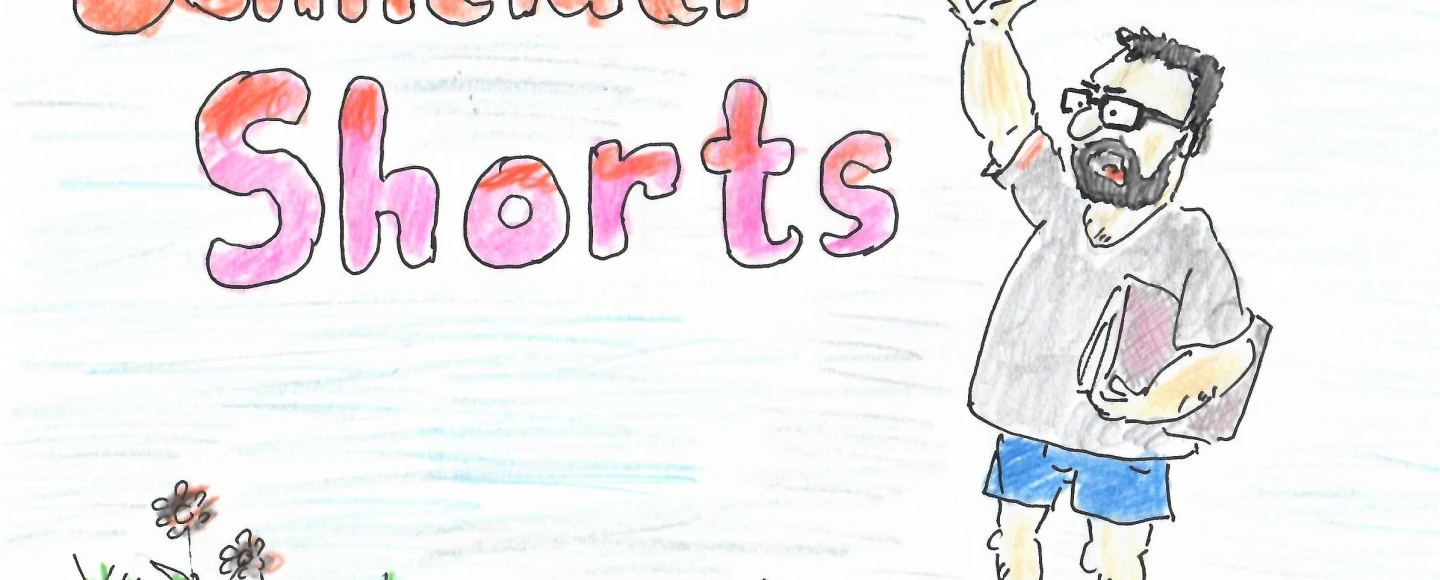



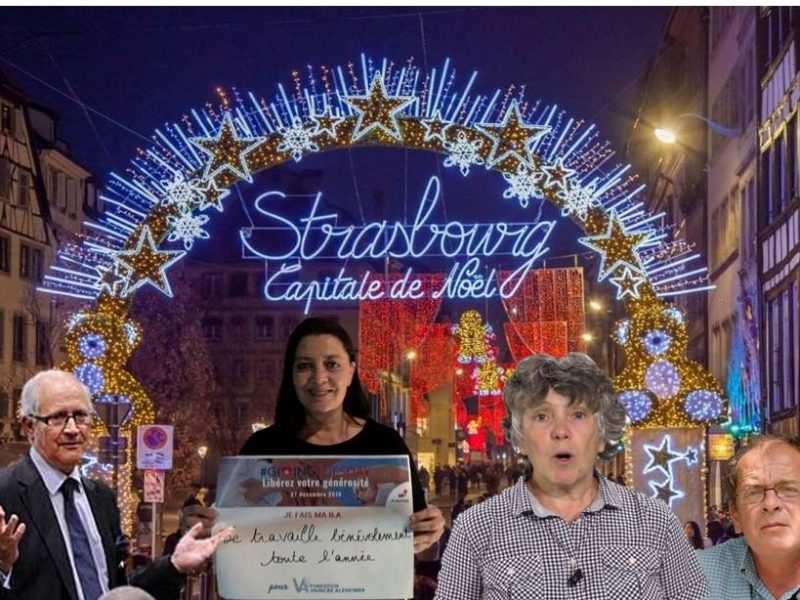


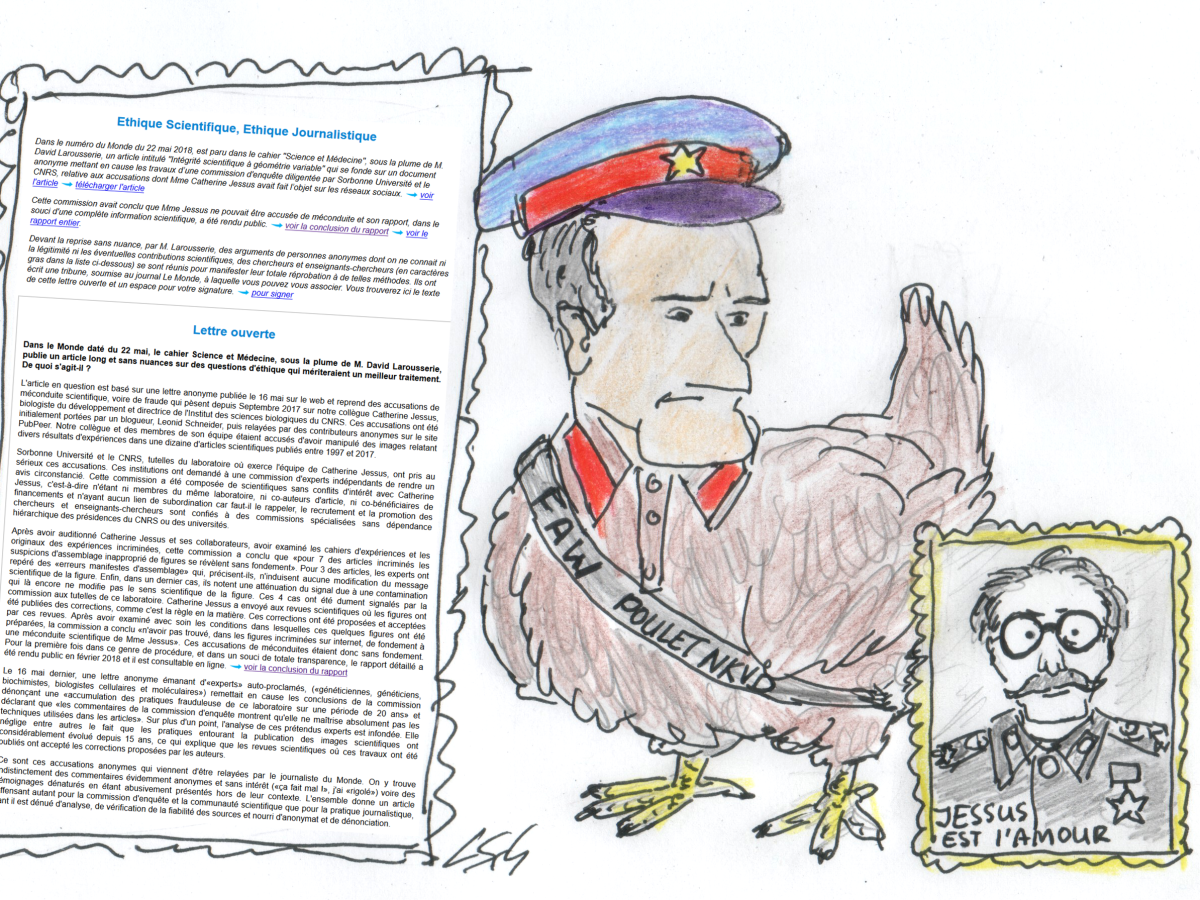














“We will not pursue it further”, FASEB J.
https://pubpeer.com/publications/3047BD7A42742A62F0FCEEFFC322F3
https://www.bidmc.org/research/research-by-department/surgery/transplant-surgery/leo-otterbein/leo-otterbein-lab
https://pubpeer.com/search?q=Otterbein
Member of the Augustine MK Choi gang.
LikeLike
Write to FASEB, you will get your own fuck-off message!
LikeLike
Nothing wrong with these data as far as FASEB J is concerned.
You have to credit FASEB J with being consistent.
https://pubpeer.com/publications/883B60715CCDE36289BAA7FB84C507
LikeLike
One thing leads to another.
Dilip Shah, Ross Summer, Augustine M Choi co-production.
Years of writing to the Weill Cornell Medical School (now called Cornell Medicine) Dean, Augustine M Choi, about problematic data at that institute without any corrective action by that institution suggested looking at his output.
https://pubpeer.com/publications/6BD341949D2731C1DEFADB1D01F1FF
Augustine MK Choi’s output (somewhat below zero).
LikeLike
I would personally award the journal “Endocrinology” with the prize of the “least concerned journal about integrity”. When several journals at least pretended to care about Saad’s mess, Endocrinology has not corrected nor retracted anything. In fact, they almost never do.
LikeLike
Yep, I wrote to them as well, about this case, Bloch and the Greeks. SIX fake FASEB J papers. Got this in August 2022 from MR Carey:
“We have already received other alerts about these articles. We are considering this matter according to our standard COPE-based procedures.”
No action.
LikeLike
Cheshire: “Do you agree that these figures are likely problematic?”

Susanna Scarpa to Cheshire:
“I don’t agree with your opinion.”
https://pubpeer.com/publications/490C0D5B61FA08C56AB0280E4EFE35
LikeLike
Never mind the opinions, what about the data?
LikeLike
Scarpa now posted fake raw data for Taglieri et al Oncology Letters (2017)


“After difficult research of raw data I have found some of these: the problem is that I could not find the data performed by the two PhD students Dr Taglieri and Dr De Iuliis, since they are not working here and I don’t know how to contact them. Anyway, I send you what I found.”
Cheshire highlighted the duplication in “raw data”:
LikeLike
“We will not pursue it further”, FASEB J
Common author, Nadia Rosenthal
https://en.m.wikipedia.org/wiki/Nadia_Rosenthal
2001 Harvard Nature Genetics paper cited 1325 according to Google scholar.
Something the matter with the data.
See the animation comment #4 ar Pubpeer.
https://pubpeer.com/publications/DFBDFB66047E21FE812DE8635606E0
https://scholar.google.com/scholar?hl=en&as_sdt=0%2C5&q=rosenthal+musaro&btnG=#d=gs_qabs&t=1686990333927&u=%23p%3DWymE8Gozf8kJ
LikeLike
“We will not pursue it further”, FASEB J
Common authors Nadia Rosenthal and Antoniò Musar. This time at the EMBL mouse biology unit.
As long as it doesn’t depend on ROCK2 it should be O.K.
https://pubpeer.com/publications/8B3284F8959BE40B4E82522861B005
LikeLike
“We will not pursue it further”, FASEB J
Common authors Nadia Rosenthal and Antoniò Musar.
It’s a twin study!
https://pubpeer.com/publications/B9401360E1D075D1E8BBCFFAA34B73
LikeLike
Another Nadia Rosenthal twin study!
https://pubpeer.com/publications/1E54B415DC0B8DA8D364795658CA7E
LikeLike
Nadia Rosenthal.
Is it mean to bring this one up?
https://pubpeer.com/publications/2AA52FDE0A202CFE1A016478D279CD
Also, all 16 panels are separate. It is not obvious if they all come from the same blot.
LikeLike
Nadia Rosenthal is also a professor at Imperial College.
https://www.imperial.ac.uk/people/n.rosenthal
Go to “publications, page 9”, to find
Musaro A, McCullagh K, Houghton L, Barton ER, Sweeney HL, Rosenthal Net al., 2001, Localized IGF-1 transgene expression sustains hypertrophy and regeneration in senescent skeletal muscle, Nat Genetics, Vol: 27, Pages: 195-200
Publication analysed here:
https://pubpeer.com/publications/DFBDFB66047E21FE812DE8635606E0
No mention in the Imperial College website of data duplication and data triplication in that publication.
LikeLike
I think I follow Imperial’s logic.
Because the paper below has been cited 1325 times according to Google Scholar, and because none of the people, bots, citing the paper noticed that it contains an image duplication, and an image triplication, it does not matter as, in fact, the data do not matter.
Ignore all those confused, silly people, who might say “what do the data say?”. That’s gone out of the window, especially when it comes to money making schemes.
Musaro A, McCullagh K, Houghton L, Barton ER, Sweeney HL, Rosenthal Net al., 2001, Localized IGF-1 transgene expression sustains hypertrophy and regeneration in senescent skeletal muscle, Nat Genetics, Vol: 27, Pages: 195-200
https://scholar.google.com/scholar?hl=en&as_sdt=0%2C5&q=rosenthal+musaro&oq=#d=gs_qabs&t=1687159980734&u=%23p%3DWymE8Gozf8kJ
LikeLike
https://www.imperial.ac.uk/about/leadership-and-strategy/president/about-the-president/
Imperial should be commended on its logic.
Just as with the Nadia Rosenthal paper, the Hugh Brady, Catherine Godson, Finian Martin paper below, money making trumps science!
It is tedious in the extreme to point out an image duplication, and an example of inappropriate image reuse, one protein the same, yet another paired protein different. The fact that the paper has been cited 60 times is evidence that people, bots, have not noticed. The data do not matter!
https://pubpeer.com/publications/1499F901988F51CDD7BA04F73BDDDC
https://scholar.google.com/scholar?hl=en&as_sdt=0%2C5&q=Brady+godson+martin&btnG=#d=gs_qabs&t=1687161150850&u=%23p%3DU1tGyzgLaTkJ
LikeLike
Taurine you say? I prefer EM fields!
Transcranial Electromagnetic Wave Treatment: A Fountain of Healthy Longevity?
https://www.mdpi.com/1422-0067/24/11/9652
https://pubpeer.com/search?q=Chuanhai+Cao
Patents
Three patent applications have resulted from the research presented in this review, as submitted by NeuroEM Therapeutics, Inc.: in the U.S. as CIP US-2022-0040492-A1 and CIP US 17/975,820, while internationally as PCT/US21/56328.
Conflicts of Interest
The University of South Florida has a financial interest in NeuroEM Therapeutics, a company that provided all of the financial support for these clinical studies. The interest has been reviewed and managed by the University of South Florida in accordance with its Institutional Conflict of Interest policy. Arendash has a financial interest in NeuroEM Therapeutics as a common shareholder and has received a salary at times as CEO or CSO of the company. Cao declares no conflict of interest….
LikeLike
I am convinced, where can I buy it?
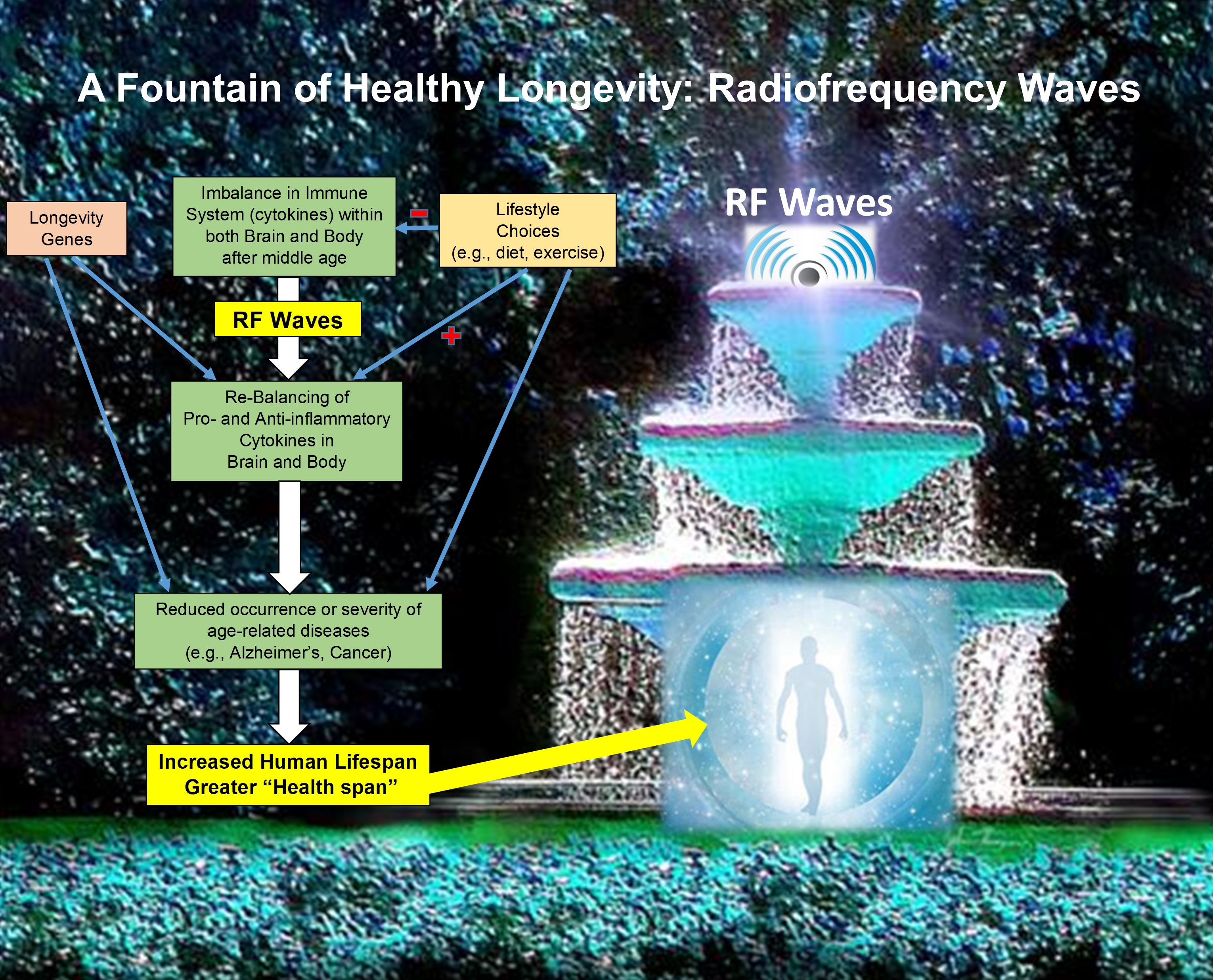
” The study’s three component protocols were also registered at http://www.clinicaltrials.gov as NCT0295830, NCT03927040, and NCT04271163, respectively (all accessed on 31 March 2023).”
First one isn’t registered, the other two were supposed to cure people (6 and 7) of Alzheimer’s.
https://clinicaltrials.gov/ct2/show/NCT03927040
https://clinicaltrials.gov/ct2/show/NCT04271163
LikeLike
Damn… I already stuck my head into my subwoover for a couple of hours a day and now you say it will only cure my Alzheimer’s?
LikeLike
“Latvian cooking recipes”
Whatever it is, pickle it.
LikeLiked by 1 person
“Probably there was confusion
We leave France and go to Italy. Susanna Scarpa is professor of experimental medicine at the “La Sapienza” University of Rome in Italy, her papers are about curing cancer.”
Susana Scarpa retraction.
https://clinicalepigeneticsjournal.biomedcentral.com/articles/10.1186/s13148-023-01595-6
LikeLike
Appear to be 2 Susana Scarpa retractions to date.
http://retractiondatabase.org/RetractionSearch.aspx?AspxAutoDetectCookieSupport=1#?AspxAutoDetectCookieSupport%3d1%26auth%3dScarpa%252c%2bSusanna
LikeLike